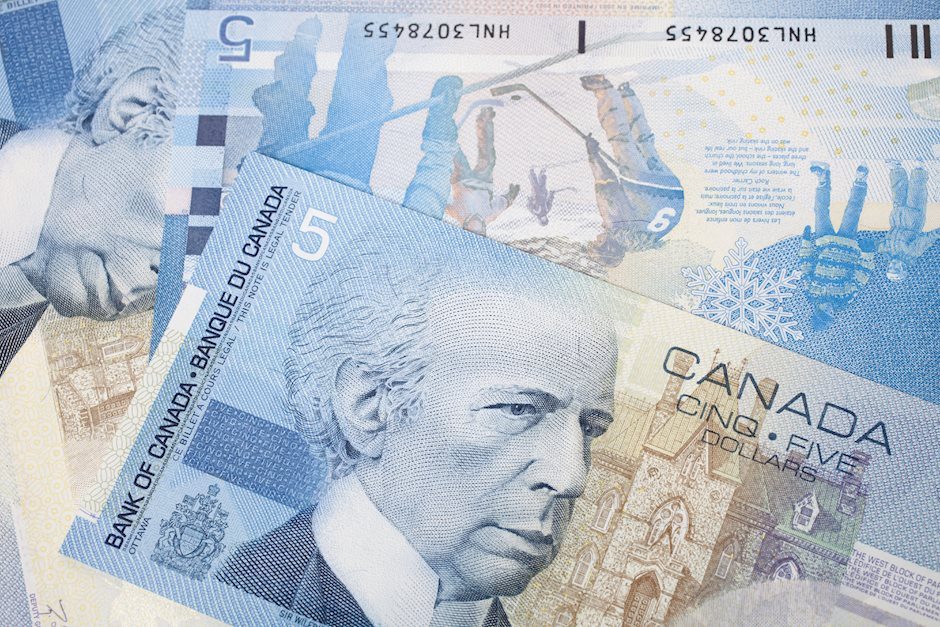USD/CAD trades with mild losses below 1.3950, US NFP data looms
- USD/CAD softens to near 1.3925 in Friday’s early European session.
- The uncertainty surrounding the US presidential election and geopolitical risks might help limit the USD’s downside.
- Economists support calls for another oversized rate cut from the BoC.

The USD/CAD pair loses momentum to around 1.3925 during the early European trading hours on Friday. The weakening of the US Dollar (USD) drags the pair lower. Traders brace for the highly-anticipated US Nonfarm Payrolls (NFP) for October, which is due later on Friday.
The Commerce Department report showed the US Personal Consumption Expenditures (PCE) Price Index, inflation by the Fed's targeted measure, increased 2.1% on a yearly basis in September, compared to 2.2% in August. This figure came in line with market expectations.
The downside of the Greenback might be limited amid the uncertainty ahead of the US presidential election next week and the ongoing geopolitical tensions in the Middle East, boosting the safe-haven currency like the USD. However, the US October NFP report on Friday could provide cues about the Fed's interest rate outlook. Any signs of weakness in the US economy or labor market could prompt the bets of a jumbo Fed rate cut again, which might exert some selling pressure on the USD.
On the Loonie front, the rising expectation that the Bank of Canada (BoC) could deliver a bigger rate cut again amid signs the economy stalled might contribute to the Canadian Dollar’s (CAD) downside. Andrew Grantham, CIBC senior economist, said, “With growth once again appearing to fall short of their already downgraded forecast, we continue to forecast that policymakers will deliver another 50 bps cut at the December meeting.”
Canadian Dollar FAQs
The key factors driving the Canadian Dollar (CAD) are the level of interest rates set by the Bank of Canada (BoC), the price of Oil, Canada’s largest export, the health of its economy, inflation and the Trade Balance, which is the difference between the value of Canada’s exports versus its imports. Other factors include market sentiment – whether investors are taking on more risky assets (risk-on) or seeking safe-havens (risk-off) – with risk-on being CAD-positive. As its largest trading partner, the health of the US economy is also a key factor influencing the Canadian Dollar.
The Bank of Canada (BoC) has a significant influence on the Canadian Dollar by setting the level of interest rates that banks can lend to one another. This influences the level of interest rates for everyone. The main goal of the BoC is to maintain inflation at 1-3% by adjusting interest rates up or down. Relatively higher interest rates tend to be positive for the CAD. The Bank of Canada can also use quantitative easing and tightening to influence credit conditions, with the former CAD-negative and the latter CAD-positive.
The price of Oil is a key factor impacting the value of the Canadian Dollar. Petroleum is Canada’s biggest export, so Oil price tends to have an immediate impact on the CAD value. Generally, if Oil price rises CAD also goes up, as aggregate demand for the currency increases. The opposite is the case if the price of Oil falls. Higher Oil prices also tend to result in a greater likelihood of a positive Trade Balance, which is also supportive of the CAD.
While inflation had always traditionally been thought of as a negative factor for a currency since it lowers the value of money, the opposite has actually been the case in modern times with the relaxation of cross-border capital controls. Higher inflation tends to lead central banks to put up interest rates which attracts more capital inflows from global investors seeking a lucrative place to keep their money. This increases demand for the local currency, which in Canada’s case is the Canadian Dollar.
Macroeconomic data releases gauge the health of the economy and can have an impact on the Canadian Dollar. Indicators such as GDP, Manufacturing and Services PMIs, employment, and consumer sentiment surveys can all influence the direction of the CAD. A strong economy is good for the Canadian Dollar. Not only does it attract more foreign investment but it may encourage the Bank of Canada to put up interest rates, leading to a stronger currency. If economic data is weak, however, the CAD is likely to fall.
Author

Lallalit Srijandorn
FXStreet
Lallalit Srijandorn is a Parisian at heart. She has lived in France since 2019 and now becomes a digital entrepreneur based in Paris and Bangkok.

















